Digital Poster
Aging: Function
ISMRM & ISMRT Annual Meeting & Exhibition • 10-15 May 2025 • Honolulu, Hawai'i

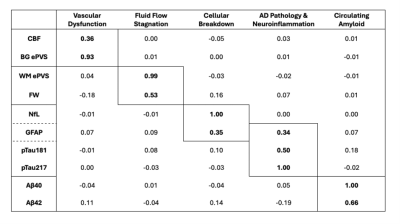 |
Computer Number: 97
4365. Multi-modal
MRI and plasma biomarker factors distinguish neurovascular
dysfunction, fluid stagnation and neurodegenerative pathology
E. Rowsthorn, M. A. Sim, W. O'Brien, S. McDonald, L. Vivash,
T. O'Brien, T. Chong, X. Shao, D. Wang, M. Law, I. Harding,
M. Pase
Monash University, Melbourne, Australia
Impact: This multi-modal study uncovered distinct
neurovascular and pathological constructs in aging, offering
a framework for investigating early markers of
neurodegenerative processes before cognitive symptoms arise.
Our findings provide a foundation for future studies
investigating complex mechanisms underlying Alzheimer’s
disease progression.
|
|
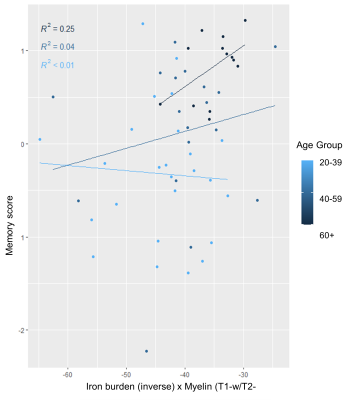 |
Computer Number: 98
4366. Role
of Inflammatory risk and myelin in executive function and
episodic memory performance in a longitudinal lifespan sample of
healthy adults
C. Gonen, K. Kennedy, K. Rodrigue
Center for Vital Longevity, UT Dallas, Richardson, United States
Impact: We demonstrated that non-invasive and widely
available imaging techniques can predict cognitive outcomes
several years later, and thus might provide clinically
relevant targets for mitigating cognitive aging.
|
|
 |
Computer Number: 99
4367. Impact
of Ageing on Regional Cortical Thickness and Its Relationship
with Cognitive Abilities
A. D. Singh, M. Kumar, B. P, S. BH, S. Khushu, A. Godbole
University of Trans-Disciplinary Health Sciences and Technology, Bengalore, India
Impact:
This research provides valuable insights into age-related cortical thinning and its impact on cognitive functions in healthy Indian population. It underscores the association between cortical thickness and learning and memory, contributing to our understanding of aging and cognitive health. |
|
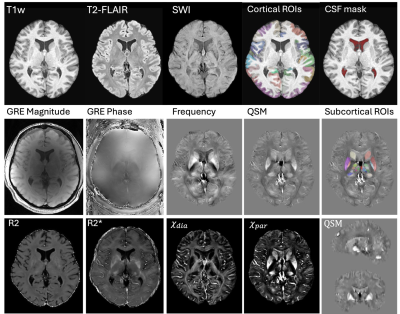 |
Computer Number: 100
4368. Quantitative
susceptibility mapping, chi-separation (χ-separation), and their
associations with cognitive functions in the UK Biobank study
Y. S. Hong, H-g Shin, Z. Xu, J. Lee, J. Koo, H. Jeong, D.
Arking, E. Guallar, P. Van Zijl, Y. Qiao, X. Li
Johns Hopkins University School of Medicine, Baltimore, United States
Impact: Higher iron content in the brain may be
associated with poor cognitive function. These associations
need to be further investigated in longitudinal data sets to
evaluate the progression of cognitive decline and
neurodegenerative disease development.
|
|
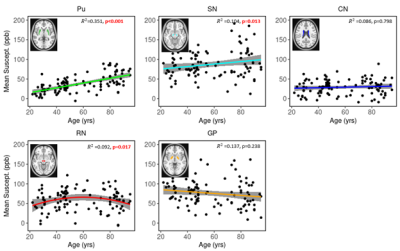 |
Computer Number: 101
4369. Impacts
of Cerebral Iron Accumulation on Cognitive Changes and Motor
Dysfunction in Aging: A Quantitative Susceptibility Mapping
(QSM) Study
J. Bae, Z. Gong, A. Guo, N. Fox, N. Zhang, A. De Rouen, H-g
Shin, X. Li, M. Bouhrara
National Institute on Aging, Baltimore, United States
Impact: This study identifies iron accumulation as a key
contributor to cognitive decline and motor dysfunction,
calling for further investigations to inform the development
of novel therapies and prevention strategies for
neurodegenerative diseases and brain aging.
|
|
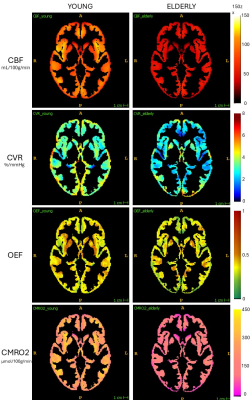 |
Computer Number: 102
4370. Impact
of Aging on Cerebrovascular and Metabolic Function: A Voxel-Wise
Analysis of CBF, CVR, OEF, and CMRO₂ Using Dual-Calibrated fMRI
S. Yoon, A. Zhang, M. Germuska, A. Ozturk, Y. Jung
University of California, Davis, Sacramento, United States
Impact: This study reveals age-related declines in
global and regional cerebrovascular and metabolic metrics,
providing critical insights into brain aging. These findings
support the utility of multi-metric imaging for
understanding mechanisms of cognitive decline and
neurodegenerative disease progression.
|
|
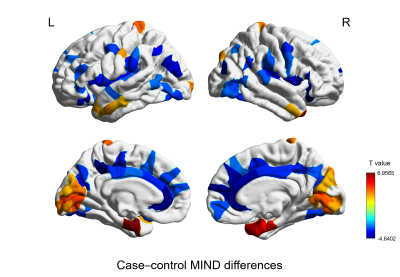 |
Computer Number: 103
4371. Transcriptional
expression patterns of morphometric inverse divergence networks
in Alzheimer’s disease
Y. Wu, J. Qu, H. Zhang, J. Yang, R. Zhu, G. Xu, W. Xu, J.
Xin, D. Wang
Department of Radiology, Qilu Hospital of Shandong University, Qilu Medical Imaging Institute of Shandong University, Jinan, China
Impact: This study reveals that MIND networks capture
structural alterations in AD, linking these changes to
cognitive decline, tau pathology, and gene expression. These
findings offer a novel framework for understanding AD
pathology and may guide future therapeutic interventions.
|
|
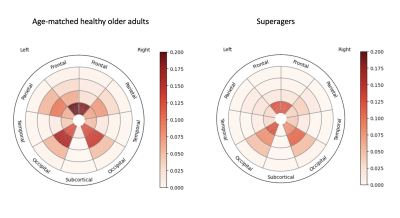 |
Computer Number: 104
4372. Mapping
Cerebral Small Vessel Disease in Superagers: Insights from White
Matter Hiperintensity and DTI Analysis
L. L. de Godoy, C. Sudre, A. Studart-Neto, B. Pastorello, N.
C. Moraes, M. Sanches Yassuda, R. Nitrini, F. Carletti, C.
da Costa Leite, S. Bisdas, H. R. Jäger
Perelman School of Medicine at the University of Pennsylvania, Philadelphia, United States
Impact: A lower burden of cerebral small vessel disease
(CSVD) at both macro- and microstructural levels may
contribute to the superagers’ phenotype, emphasizing the
importance of managing known CSVD risk factors, including
hypertension, diabetes, hyperlipidemia, and smoking.
|
|
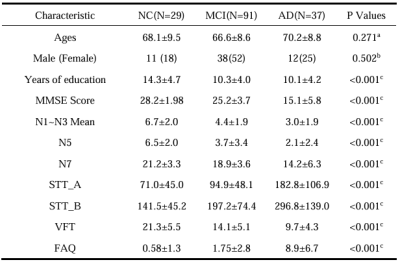 |
Computer Number: 105
4373. Abnormal
topological organization of T1 and quantitative susceptibility
mapping covariance networks in Alzheimer’s disease
M. Huang, Y. Guo, F. Chen
Hainan university, Haikou, China
Impact: These findings provide new insights into AD
pathology by revealing disrupted network organization,
offering potential biomarkers for early diagnosis,
intervention, and disease monitoring.
|
|
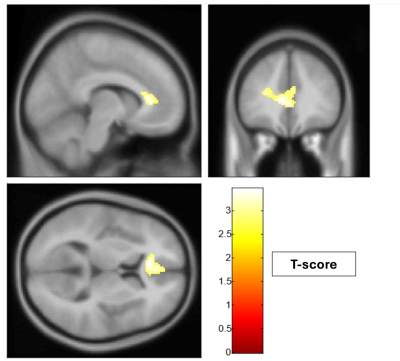 |
Computer Number: 106
4374. Cerebrovascular
reactivity in hypertensive older adults: a resting-state BOLD
fMRI study
S. Srinivasan, S. Penukonda, D. Zhu, W. Vongpatanasin, R.
Zhang, B. Thomas
University of Texas Southwestern Medical Center, Dallas, United States
Impact: Hypertension compounds the effect of aging on
the brain’s vasculature and increases endothelial
dysfunction. Notably, we observed the novel result that
high-density lipoprotein (HDL) cholesterol levels to be
protective of endothelial function in the absence of
hypertension.
|
|
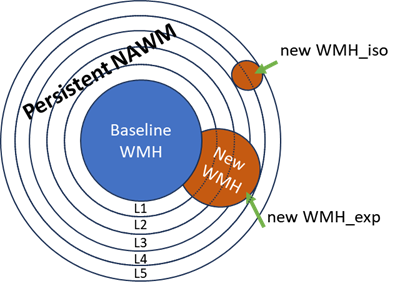 |
Computer Number: 107
4375. Characterization
of WMH penumbra and lesion progression using baseline and
longitudinal WMH layer analysis with FLAIR and PCASL
S. H. Chung, G. Li, T. Zhao, J. Tang, Y. He, E. Joe, H.
Chui, L. Yan
Northwestern University, Chicago, United States
Impact: Both FLAIR and pCASL CBF reveal the WMH
progression. New WMH formation was shown to occur primarily
by expansion from existing WMH. The WMH layer
characterization may help elucidate the mechanics of the WMH
progression.
|
|
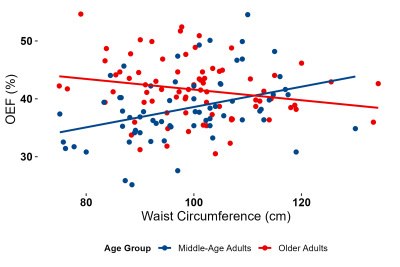 |
Computer Number: 108
4376. Impact
of Waist Circumference in Older Adults on Cerebral Oxygen
Extraction Fraction
S. Penukonda, S. Srinivasan, F. Yu, H. Lu, T. Sapp, I.
Hajjar, L. Lacritz, J. de Lemos, A. Shah, B. Thomas
University of Texas Southwestern Medical Center, Dallas, United States
Impact: We report that oxygen extraction fraction (OEF)
is increased in middle-age adults with obesity (<60 years),
suggesting accelerated aging. Notably in adults older than
60 years, OEF decreased, indicating potential decrease in
neuronal function.
|
|
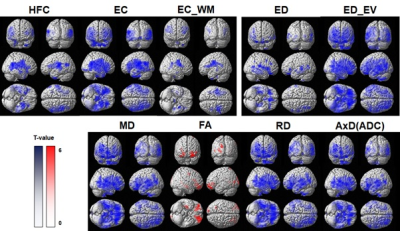 |
Computer Number: 109
4377. Investigation
of the Relationship Between Electrical Conductivity,
Diffusivity, and Tissue Volume in the Aging Brain
G-H Jahng, M. B. Lee, H. Y. Rhee, S. Park, C-W Ryu
Kyung Hee University Hospital at Gangdong, Seoul, Korea, Republic of
Impact: This research underscores the importance of
distinguishing between conductivity and diffusion changes
when interpreting clinical MREPT data.
|
|
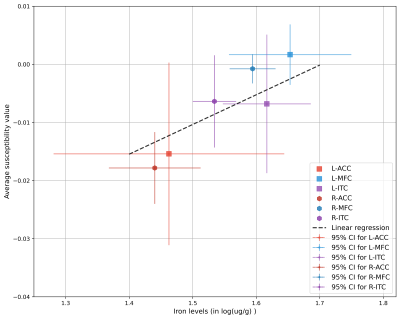 |
Computer Number: 110
4378. Quantitative
assessment of iron and magnetic susceptibility in cortical
regions of the same older adults
R. Abid, M. T. Yasar, A. R. Ridwan, M. Niaz, Y. Wu, S.
Zhang, A. Bush, S. Ayton, A. Evia, D. Bennett, J. Schneider,
K. Arfanakis
Illinois Institute of Technology, Chicago, United States
Impact: The present study established the relation of
cortical magnetic susceptibility with iron levels in
community-based older adults. This relationship may be used
to estimate iron levels in-vivo based on QSM, thereby
enhancing our understanding of iron dysregulation in
neurodegenerative diseases.
|
|
 |
Computer Number: 111
4379. Multiscale
structural assessment of age-related longitudinal change in
cortical grey matter and corresponding white matter regions
K. Kennedy, D. Hoagey, K. Rodrigue
The University of Texas at Dallas, Dallas, United States
Impact: Longitudinal methods can tease apart lead-lag
associations between aging of GM and WM. These neuronal
parts have different biological make-up and they differ in
susceptibility to age-related damage.
|
The International Society for Magnetic Resonance in Medicine is accredited by the Accreditation Council for Continuing Medical Education to provide continuing medical education for physicians.